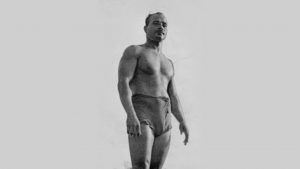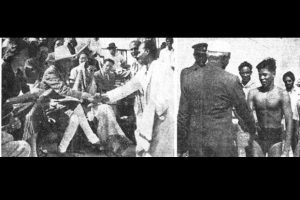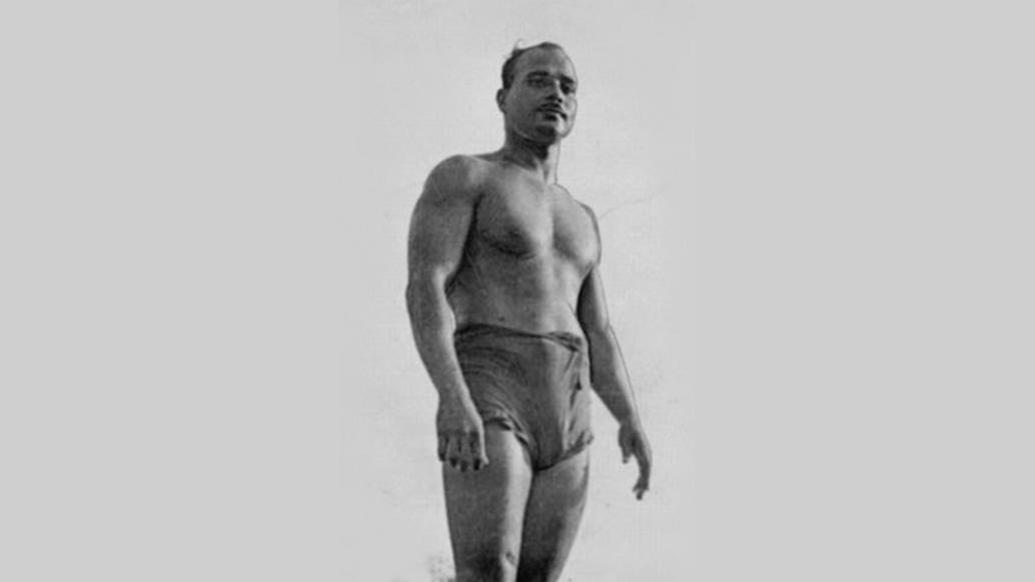Sachin Nag was born in Varanasi in a middle-class Bengali family. Sachin was well-acquainted with the lanes, by-lanes and Ghats of Benaras and often gazed at the endless flow of the Ganga. But at that time he was completely unaware about how this holy river would change his destiny and write a new chapter in the history of Indian sports.
As a young boy, Sachin had his first tryst with water when he was fleeing policemen who were chasing him for an unknown reason. The 10-year old boy jumped into the river to hide from the police in between the boats. At that time a 10-km Swimming competition was going on over the Ganga. To hide himself, he also joined the competition group and somehow ended up finishing third. This was the start of a journey- the journey of Sachin Nag- the swimmer who brought India its first gold medal in Asian Games history.
The action that started to dodge the policemen, soon became a source of motivation to Sachin Nag. The entire river was there for him; Sachin just embraced it. Most of the times he was found in the water, swimming across the Ghats and mastering the strokes to perfection. For the next few years, Sachin competed in several river competitions, ending with impressive results. It was at this time that his family thought of moving back to Kolkata (then Calcutta). This acted as a golden opportunity for Sachin who was ready to plunge into any competition with his skill and prowess.
 The swimming scenario in Bengal was quite promising then with several pools and clubs producing national-level swimmers. Moreover there was River Hoogly where most of the long-distance competitions took place. In 1938, competing for Hatkhola Club of Calcutta, Sachin Nag won the 100m and 400m Freestyle competitions; thus becoming the state champion.
The swimming scenario in Bengal was quite promising then with several pools and clubs producing national-level swimmers. Moreover there was River Hoogly where most of the long-distance competitions took place. In 1938, competing for Hatkhola Club of Calcutta, Sachin Nag won the 100m and 400m Freestyle competitions; thus becoming the state champion.
Next, it was time for Nag to take on the national championships. In 1939, he equalled the national record of 1 minute 4 seconds in the 100m Freestyle. The record was held by Dilip Mitra who later represented India in the 1948 Olympics. In the same competition, he broke the 200m Freestyle record (2 minute 29seconds), held by another Olympian Durga Das. At the Bengal Swimming circuit, Das was regarded as one of the most esteemed swimmers. The competition between Nag and Dilip Mitra was well-known and it continued till the former broke the 100m Freestyle record in 1940 finishing at 1 minute 2.25 seconds.
Sachin Nag represented India in the 1948 Olympic Games. In the 100m Freestyle event he finished 6th in the first round with a timing of 1minute 3.8 seconds. But this was not the only event in which he represented the nation. He was also a part of the Water Polo squad. According to a reminiscence of his son Ashok Nag, the swimmer scored four goals in India’s 7-4 win against Chile. Sachin Nag further went on to represent India in Water Polo in 1952 Helsinki Olympics.
But the golden moment came in between these two Olympics. In 1951 India hosted the inaugural Asian Games at Delhi. On the third day of the competition, in the presence of Indian Prime Minister Jawaharlal Nehru, Sachin Nag created history by clinching India’s first-ever Asian Games gold medal. Nag finished the 100m Freestyle event clocking little over a minute. It is said that Nag was tied with his Singaporean competitor at 1 minute 4.7 seconds at the number one position but the judges put the result in India’s favour thus giving Sachin Nag the gold. Basking in the glory of his 100m Freestyle win, Nag also won bronze medal as a part of 4x100m Freestyle Relay team.
 Just after his historical win, the Indian Prime Minister congratulated Nag and he was at the cynosure of all eyes. But good things also fade away quickly. Time passed and India won a total of 600 medals in Asian Games of which 138 are gold, 177 silver and 285 are bronze. But among all these, India has won only 9 medals in Swimming, of which there is only 1 gold till date and that belongs to Sachin Nag. Still his story is an untold one – in 1982, when India hosted the Asian Games, Nag did not receive an invitation to attend the competition. But at the Asian Games Village at Siri Fort in Delhi there is a block named after him.
Just after his historical win, the Indian Prime Minister congratulated Nag and he was at the cynosure of all eyes. But good things also fade away quickly. Time passed and India won a total of 600 medals in Asian Games of which 138 are gold, 177 silver and 285 are bronze. But among all these, India has won only 9 medals in Swimming, of which there is only 1 gold till date and that belongs to Sachin Nag. Still his story is an untold one – in 1982, when India hosted the Asian Games, Nag did not receive an invitation to attend the competition. But at the Asian Games Village at Siri Fort in Delhi there is a block named after him.
After his career as an active sportsman, Sachin Nag helped to mentor Bengal’s best known swimmers like Arati Saha and Nafisa Ali. But he died as a sad man waiting to have some recognition from the Indian Government – not financial considerations but acknowledgement of his service to the Indian sport.





Thank you Sir. The motive of my website is to bring forward the achievements of our unsung heroes and other unknown aspects of sports.
Thank you,a good gesture.